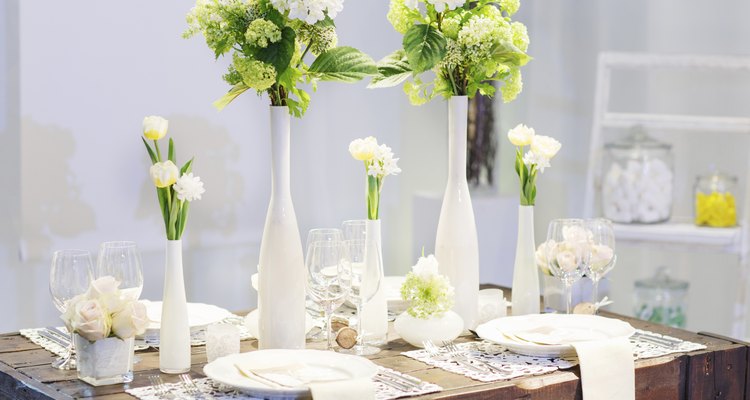
romrodinka/iStock/Getty Images
You might automatically think of a vase of flowers when you hear the term "centerpiece," but a centerpiece can be many different things, at a few differing heights. Although the table's food and dishware are most important, the centerpiece creates the focal point. Learn to display or group your centerpiece so that it's a visual pleasure, not a dining nuisance.
Seeing Eye to Eye
A standard centerpiece full of blooms and greenery filler is going to restrict eye contact between seated guests if it's too high. Rather than forcing everyone to crane their necks to see each other around a large floral or similar arrangement, keep it below eye level. A good maximum height is 22 inches, unless you use a towering vase that reaches above eye level.
Flower Tower
If you're after a dramatic effect, use a tall, thin vase as the table's center of attention. As long as the vase is taller than eye level, it'll carry its contents out of the way of your guests' eye contact. A tall, narrow vase isn't as difficult to see past as a spray of flowers or twisty branches, for example. Such as vase should stand 22 inches or slightly taller. It can be lower, however, if just a few flower or branch stems carry the visually distracting blossoms or spray out of the way. To help keep a tall vase from toppling, weight the bottom with pebbles.
Group Therapy
A centerpiece grouping of items, such as organic-form driftwood or candles, or a combination of the two, should vary in heights from a few inches to 22 inches tall -- lower if you have children or small adults at the table, or taller if you use a collection of tall, unobtrusive vases. Non-floral displays include helium-filled balloons on weighted strings for celebrations, and thin, clear vases filled with anything, from small shells to colored-glass stones to convey a theme. Groupings of varied heights appear less monotonous, especially if you arrange like items by odd numbers, such as three pillar candles or five vases of peonies or mini sunflowers.
Hung Up on Centerpieces
Even if you have a chandelier, a hanging centerpiece makes an unusually interesting statement and leaves more room on the table for a family-style spread of platters and serving bowls. Hang a flower basket, potted plant or tray of candles, theme decorations or travel trinkets, for example, from the ceiling, centered over the table. Create an offset effect by hanging the centerpiece on one side of a light fixture, or one on either side for more symmetry. Hang it as high as you like, as long as it doesn't appear "lost," or as low as you like, as long as it doesn't impede on your table-mates' conversations.
Related Articles

Decorating for a Greek Party
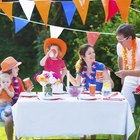
How to Decorate a Picnic Pavilion
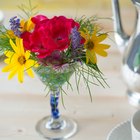
How to Make a Flower Arrangement in a ...

How to Decorate an Ugly Reception Hall
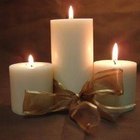
Christian Decorating Ideas for Table ...
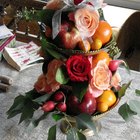
Centerpiece Ideas for a Buffet Table
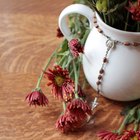
How to Arrange Church Altar Flowers

How to Tell What Body Type You Are
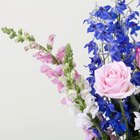
How to Make a Large Wedding Altar ...

What Is the Proper Presentation of a ...

What Body Type for a Drop-Waist Dress?

How to Decorate With Mums for a Fall ...

How to Decorate a Gym for a Wedding

How to Make a Wedding Flower ...
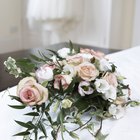
How to Make a Wedding Cascade Bouquet

How to Design a Crescent Floral ...
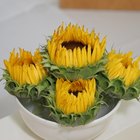
Types of Centerpieces & Table ...

How to Decorate for a Very Small Indoor ...

The Best Dresses for Girls With Broad ...

Simple Church Wedding Decorating Ideas
References
Resources
Writer Bio
Lorna Hordos is a home-flipping business owner and freelance writer. She writes friendly, conversational business, home and lifestyle articles for Bizfluent, azcentral, Daltile, Marazzi, Lowes, Philips Lighting, WordPress.com and numerous other publications.
Photo Credits
romrodinka/iStock/Getty Images